
Moreno Valley Integrated Resource Plan (IRP)
Energeia was engaged by Moreno Valley Utility (MVU) to develop their 2023-25 Integrated Resource Plan (IRP). As part of this process, Energeia will be analyzing
Hard-to-abate emissions continue to be forecast as minimally changing to 2050 across various sectors in the United States, including transportation and industrial sectors which account for two-thirds of total baseline emissions, as shown in Figure 1. These industries rely on energy-intensive processes that are difficult to decarbonize, such as high-temperature furnaces, heavy machinery, and chemical reactions.
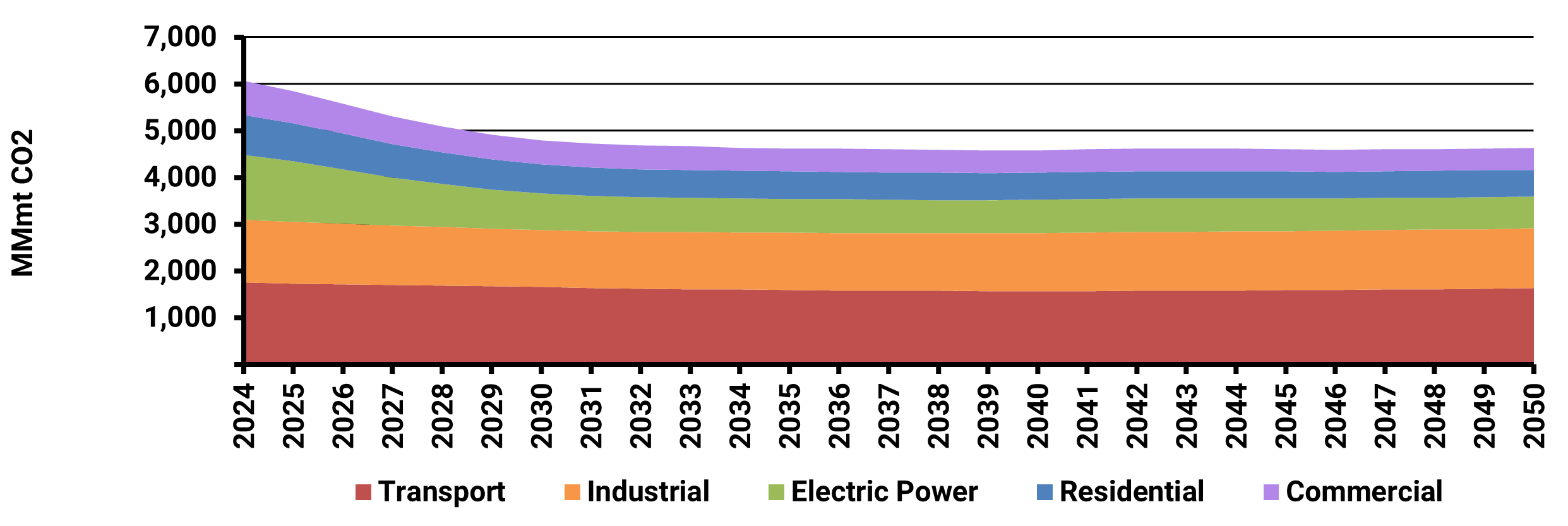
Figure 2 below shows the emissions targets federally and by state, which show the misalignment between the forecast emissions over time shown in Figure 1. Understanding the factors driving industrial emissions, and the unique abatement options of these sectors, including their potential for energy efficiency, fuel switching or post-emissions abatement is crucial for utilities, policymakers, and industry leaders.
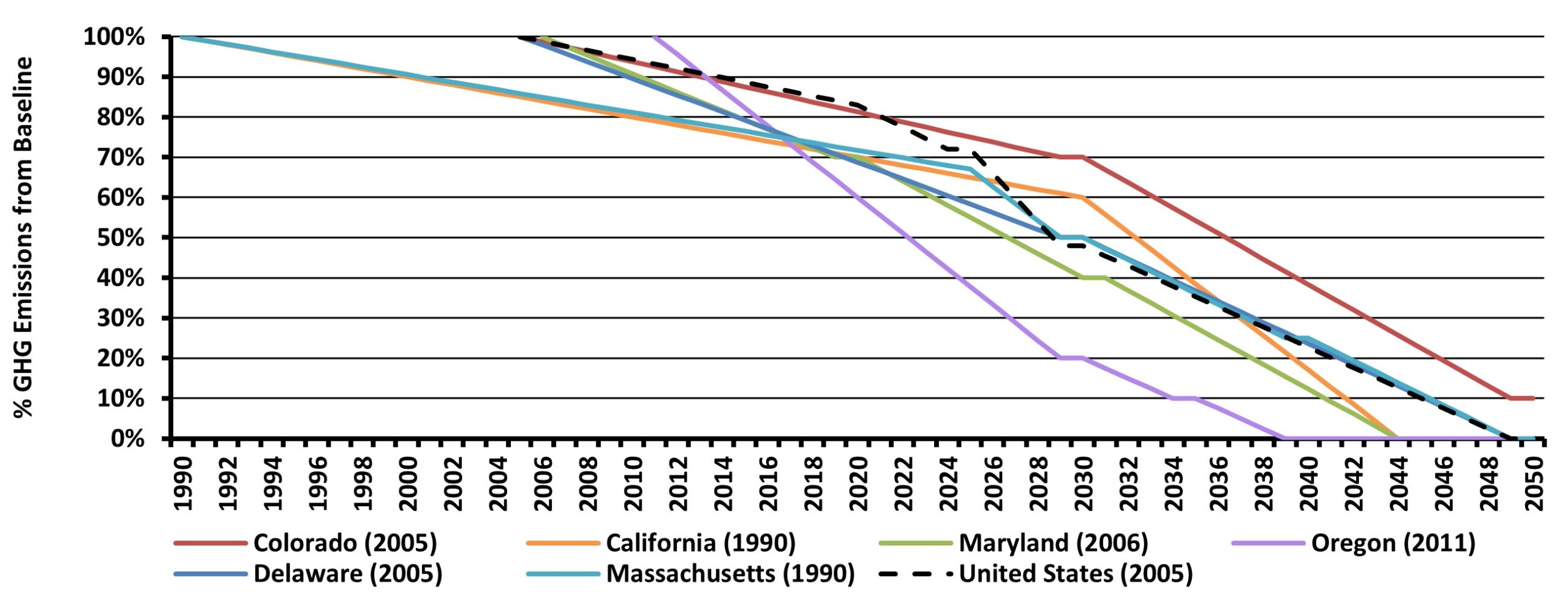
The following sections summarize Energeia’s latest research into hard-to-abate industrial emissions, including the factors contributing to their persistence, strategies for improving energy efficiency and reducing emissions, and opportunities for implementing carbon capture and alternative technologies. These sections offer actionable insights and recommendations designed to help stakeholders address the complexities of decarbonizing hard-to-abate industries while maintaining economic competitiveness.
Industrial energy usage is shown below in Figure 3 by industrial segment and fuel type along with corresponding emissions. Bulk chemicals, mining, refining, and construction have the highest total energy use.


Hard-to-abate processes occur in a number of different sectors. Each of the hard-to-abate end uess typically involves one of the following:
Table 1 below summarizes the sectors and their corresponding processes which classify them as hard to abate.
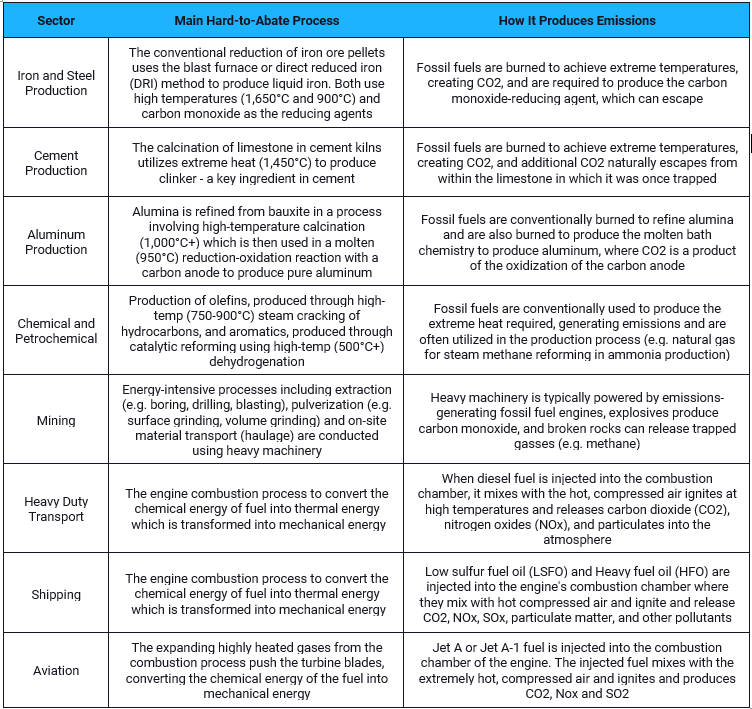
The following table summarizes the different solutions which aim to abate carbon emissions from processes.
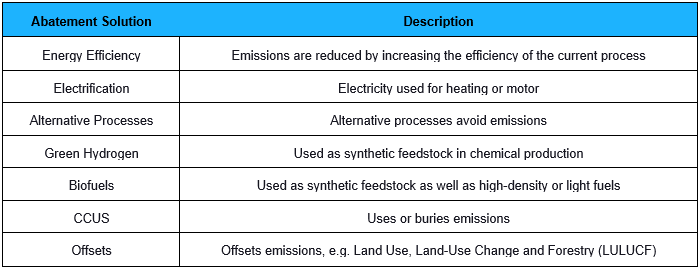
Different hard-to-abate sectors benefit from different solutions for emissions abatement. Mixed solutions may be required for different processes within the same industry. Energy efficiency, and alternative processes may not abate all emissions.

Listen or click through at your own pace
Energeia researched and modeled the cost per metric ton of CO2 abatement to decarbonize different sectors. Energeia’s analysis shows a wide range of costs among potential decarbonization pathways for hard-to-abate industry sectors.
Figure 5 below shows the outcomes of the modeling for iron and steel production. Key iron and steel abatement options can be extremely expensive at over $3,000/CO2e, with carbon capture, utilization and storage (CCUS) or offsets potentially being more cost-effective solution.
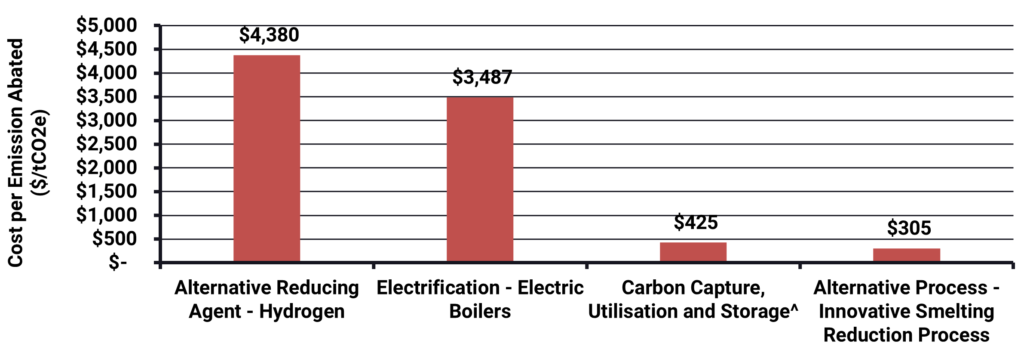
For aluminum, shown in Figure 6 below, there are a number of options at much lower cost, but as is the case for iron and steel, CCUS is the only solution (other than offsets) capable of achieving 100% abatement net of lower-cost alternative process solutions.
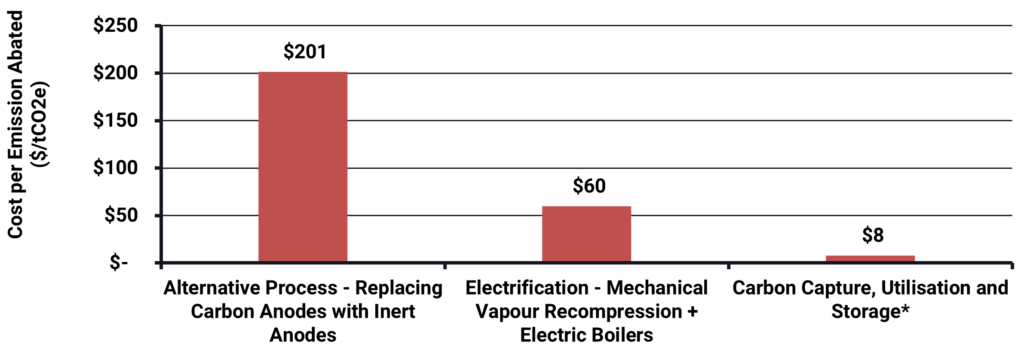
For cement production, costs rise compared to aluminum, and improved thermal efficiency is the lowest cost solution to abatement, however, this solution is not capable of abating all emissions. Note that the CCUS costs are vastly different between steel and iron vs. cement, mainly due to the difference in capture and utilization costs.
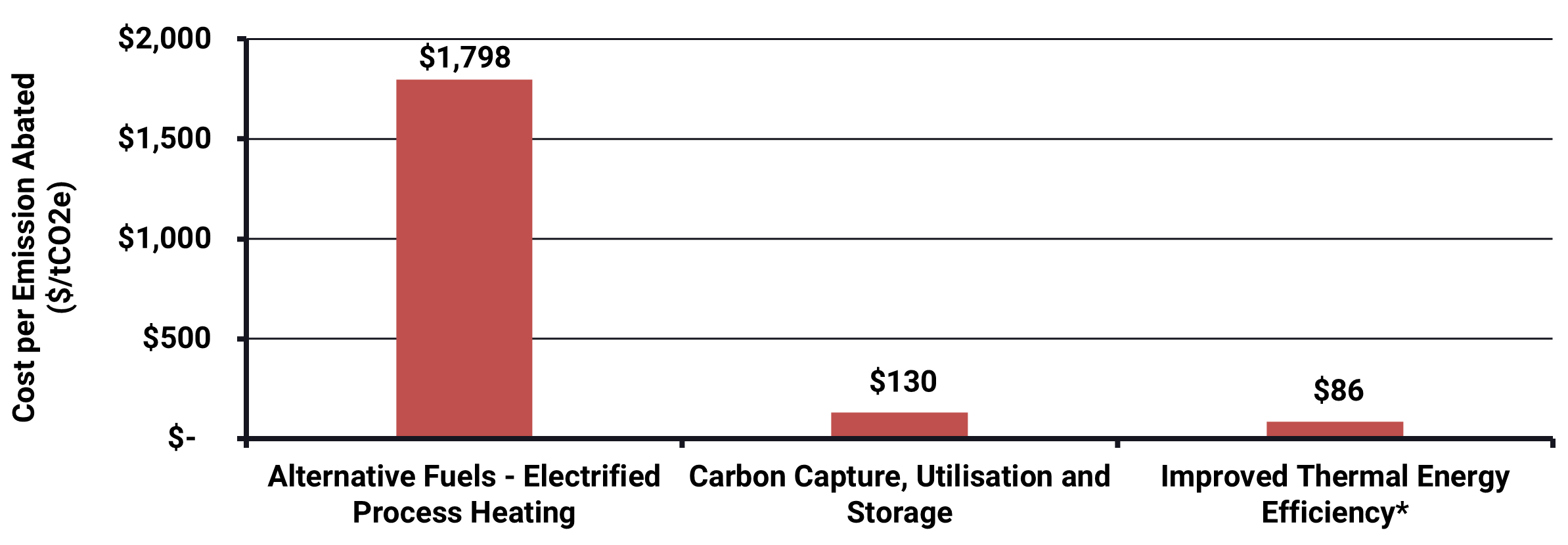
Petrochemical and chemical production have very high abatement costs, as shown in Figure 8 below, with carbon capture the lowest cost solution to full abatement, and hydrogen alternatives the highest cost solution of any hard-to-abate solutions considered.
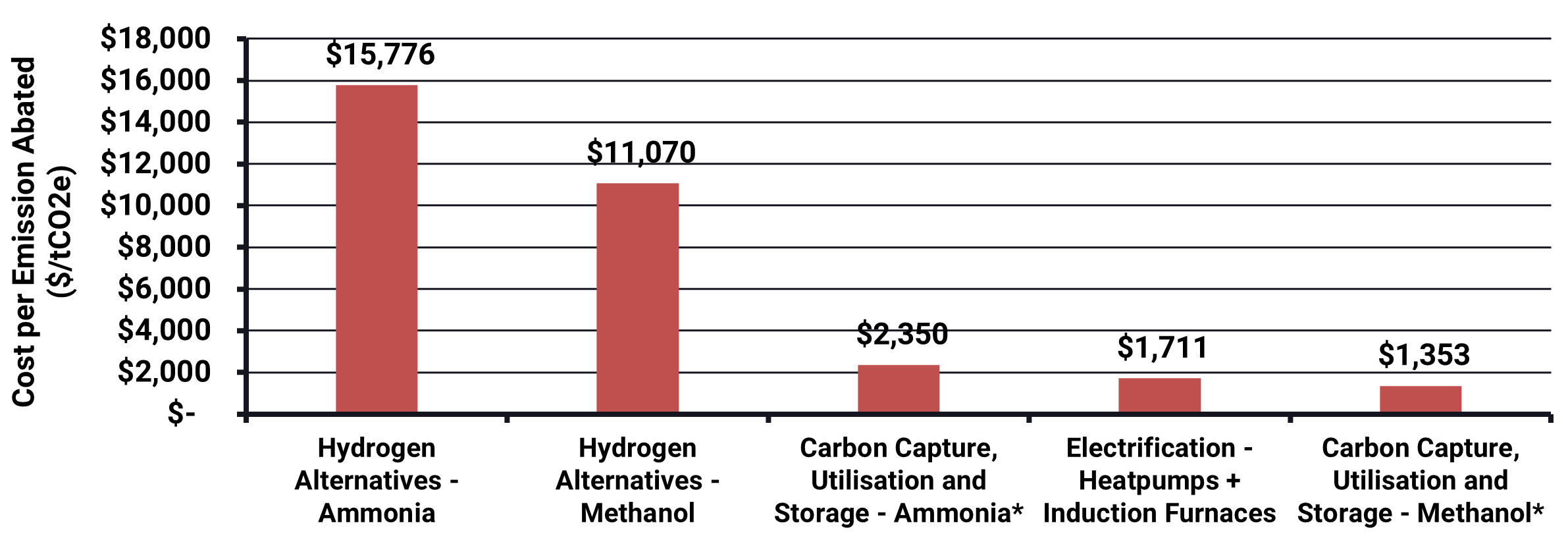
Importantly, many of the key solutions identified here will not be able to reduce 100% of sector emissions, instead requiring a portfolio approach and/or offsets.
Transport remains one of the largest emitting sectors that many countries are looking to decarbonize moving forward. Figures 9 – 11 show the cost to abate emissions for heavy-duty road transport, shipping and aviation.
For heavy-duty road transport, electrification is the least cost solution for short-distance applications, however, current battery electric technology is constrained by energy density. Biofuels provide a cost-effective solution for reducing emissions in existing fleets across all sectors despite their lower energy density. Alternative fuels (ie. hydrogen) offer a potential technical solution to the energy density challenge for vehicle range, however, face infrastructure and scalability issues due to the immaturity of the technology. Alternate fuels are also currently modeled to be the highest-cost solution.
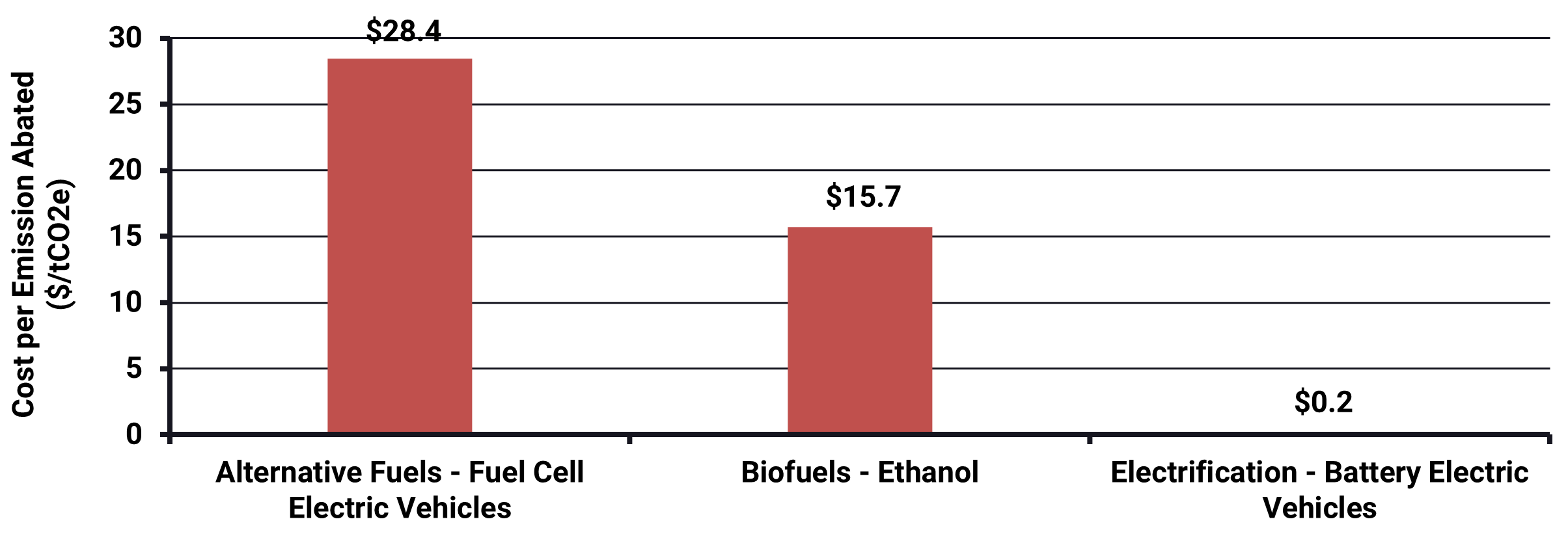
Heavy duty transport and shipping appear capable of decarbonization without CCUS or offsets, however, aviation remains high cost.
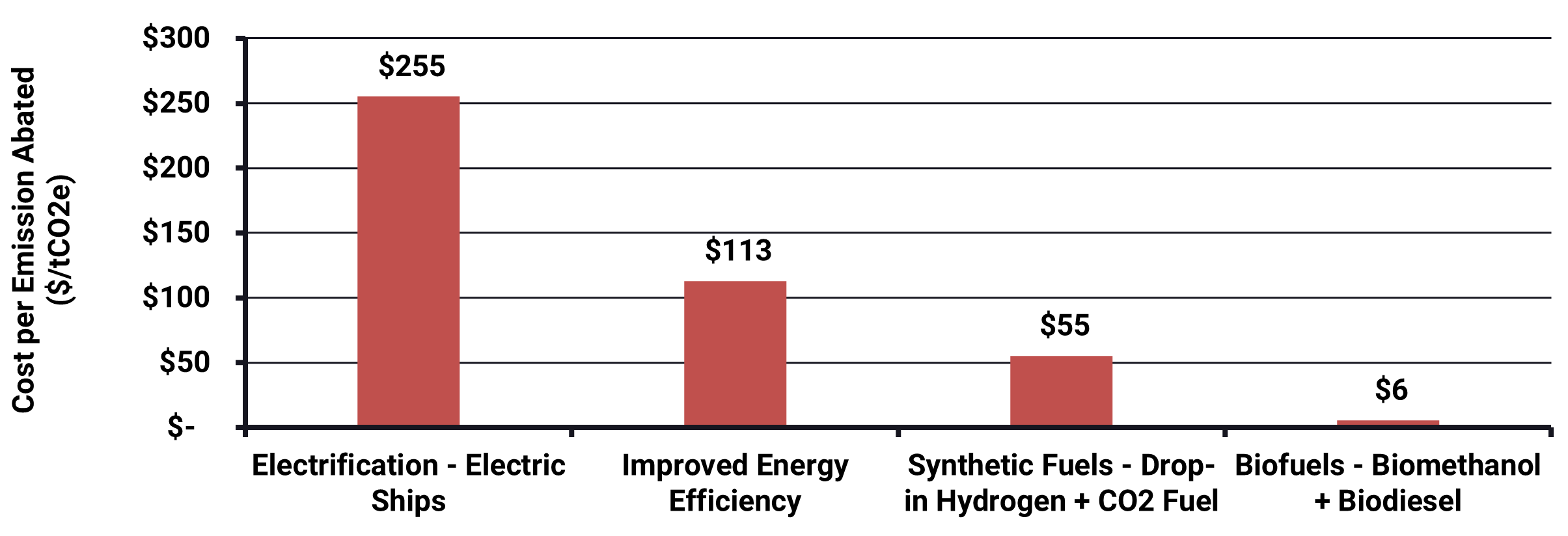
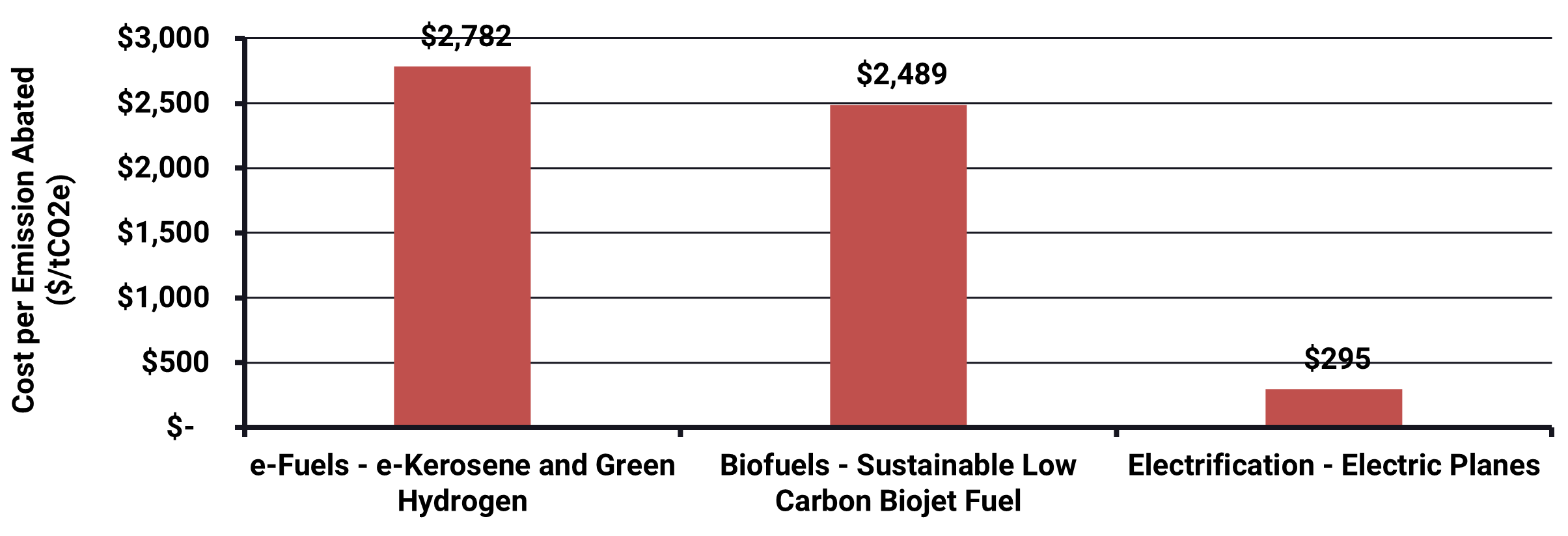
Uncertainty in costs additionally drives the complexity of decarbonization of hard-to-abate sectors. Figures 12 and 13 below show the range in estimates of solution costs depending on the technology and the forecast year.

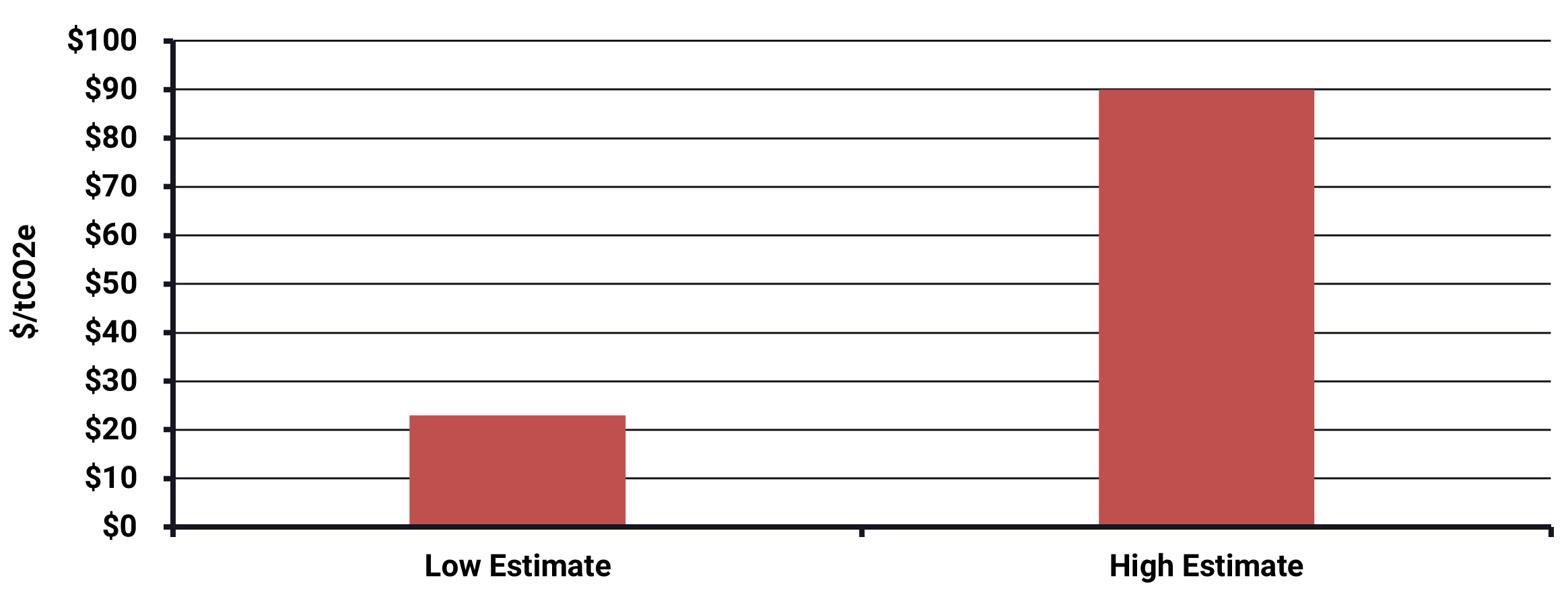
Energeia’s key takeaways and recommendations for tackling emissions reductions in hard-to-abate industries (derived from Energeia’s best practice research and innovative analysis) are summarized below.
Key Takeaways:
Key Recommendations:

Energeia was engaged by Moreno Valley Utility (MVU) to develop their 2023-25 Integrated Resource Plan (IRP). As part of this process, Energeia will be analyzing
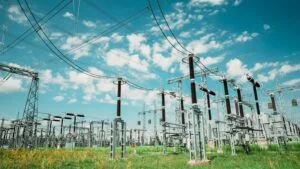
Energeia’s research and data engineering expertise proved essential in building a comprehensive custom database of utility grid infrastructure spatial data for each target market.

Los Angeles Department of Water and Power (LADWP) gathered a team of leading industry experts, including Energeia, to develop an Integrated Human Resources Plan (IHRP)
US Office
Mansion Square
Suite 380, 132 E Street
Davis, CA 95616
Phone: +1 (530) 302-3861
Fax: +1 (530) 419-2572
USA@energeia-usa.com
energeia-usa.com
Sydney Office
Energeia Pty Ltd
WeWork
L1, 1 Sussex St
Barangaroo NSW 2000
Phone: +61 (0)2 8097 0070
ABN: 15 134 783 412
consulting@energeia.com.au
